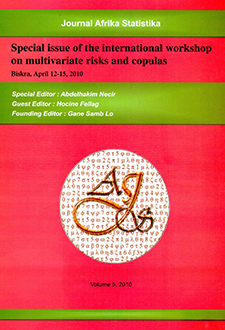Abstract
A consecutive k-out-of-n system consists of an ordered sequence of $n$ components, such that the system functions if and only if at least $k$ $(k\leq n)$ consecutive components function. The system is called linear ($L$) or circular ($C$) depending on whether the components are arranged on a straight line or form a circle. In the first part, we use a shock model to obtain the reliability function of consecutve-k-out-of-n systems with dependent and nonidentical components. In the second part, we treat some numerical examples to show the derive results and deduce the failure rate of each component and the system.
Un système $k$-consécutifs-parmi-$n$ est un système constitué de $n$ composants, tel que ce système fonctionne si et seulement si au moins $k$ $(k\leq n)$ composants consécutifs fonctionnent. Le système est dit linéaire (L) ou circulaire (C) suivant la disposition des composants en ligne ou en cercle. Dans la première section, en utilisant le modèle de chocs, on établit la fiabilité du système en question ayant des composants dépendants et non identiques. Dans la deuxième section, on traite des exemples numériques qui illustrent les résultats obtenus tout en déduisant le taux de panne de chaque composant et du système.
Citation
Soheir Belaloui. Besma Bennour. "Reliability of linear and circular consecutive-$k$-out-of-$n$ systems with shock model." Afr. Stat. 10 (1) 795 - 805, June 2015.
Information





